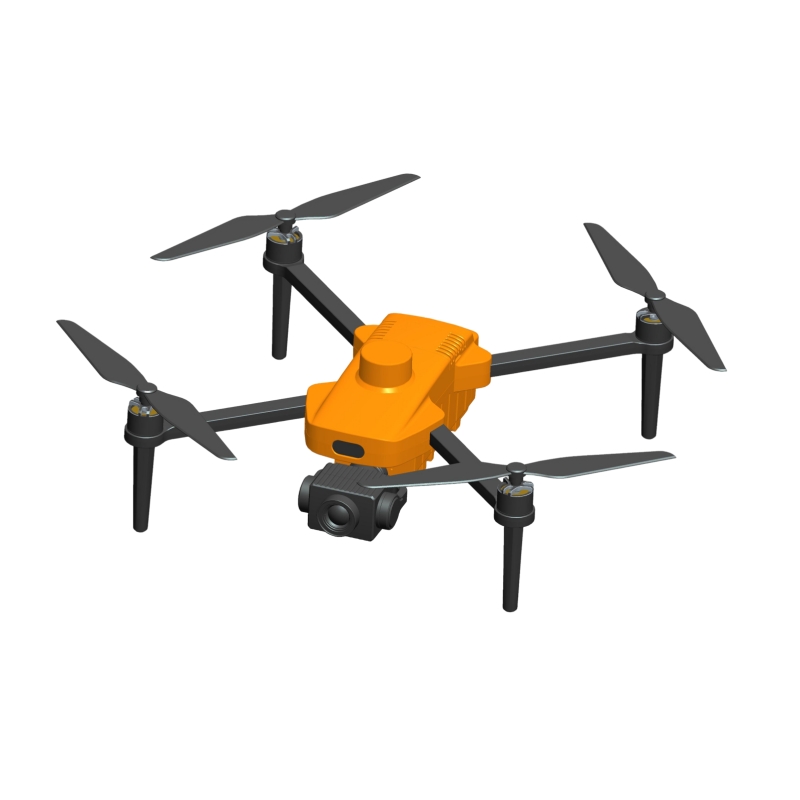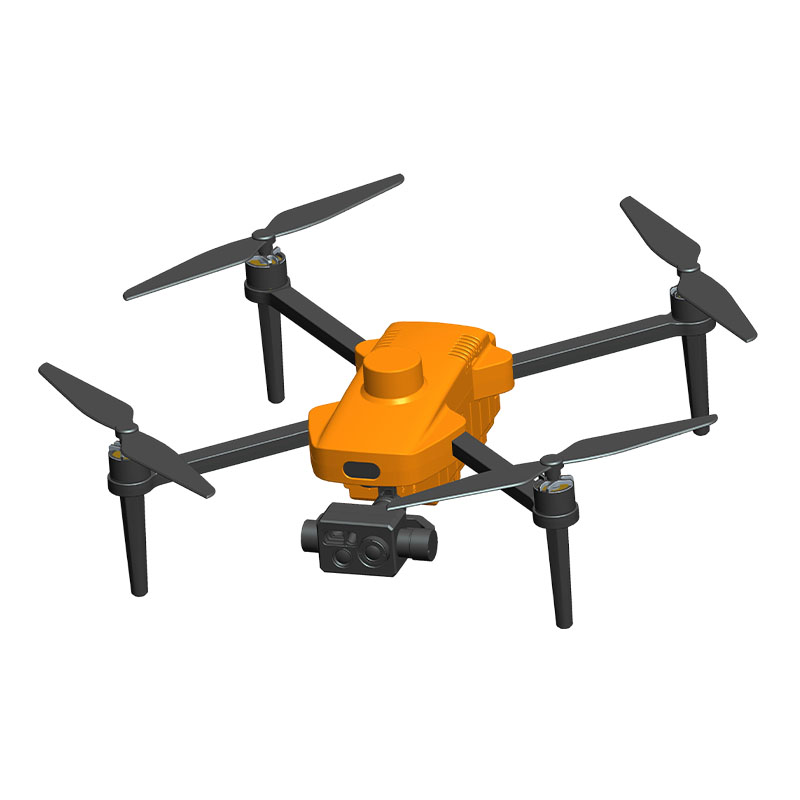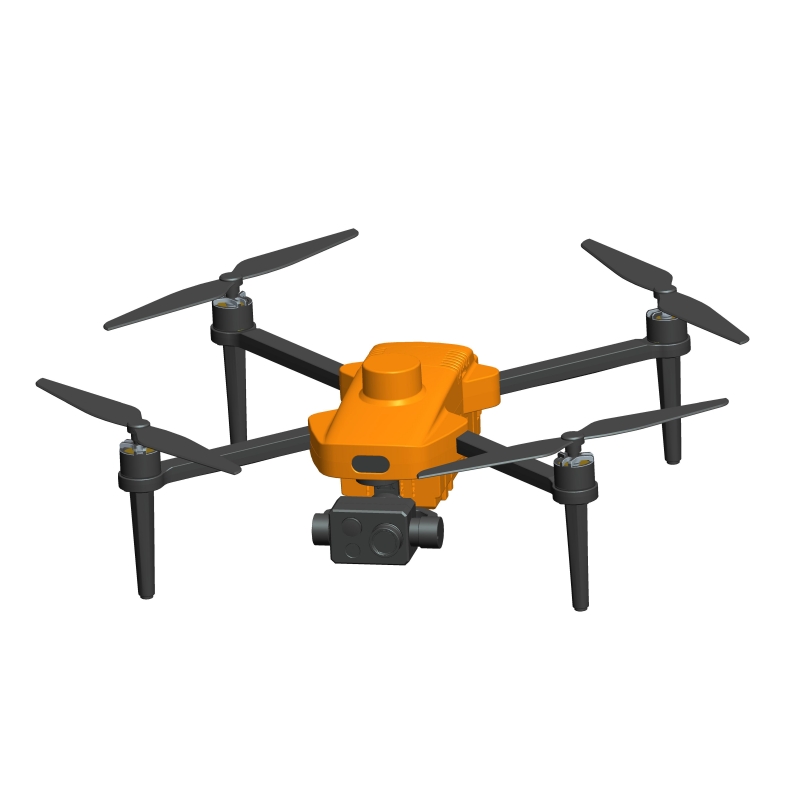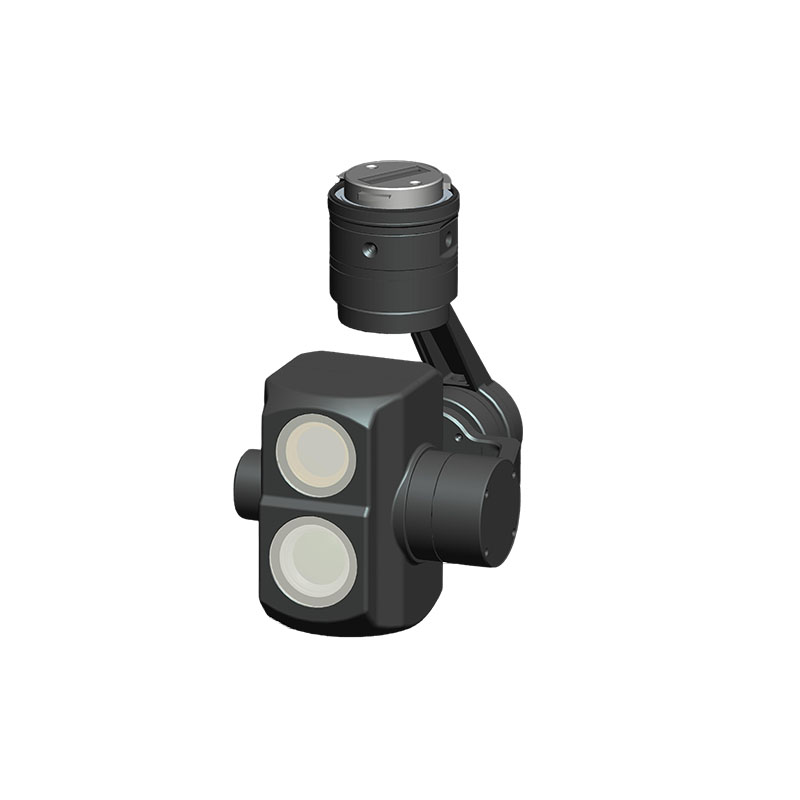How to verify the light source stability of a three-color light inspection quadcopter UAV under different wind speed conditions?
Release Time : 2025-09-29
In the practical application of three-color light inspection quadcopter UAVs, the impact of varying wind speeds on light source stability is a critical factor in ensuring inspection quality. As a core component of a drone inspection system, the stability of the three-color light source is directly related to the reliability of inspection data and the accuracy of defect identification. Verifying light source stability requires examining wind field interference, mechanical vibration, electrical characteristics, environmental adaptability, and system coordination to ensure the drone maintains efficient inspection capabilities even in complex weather conditions.
The impact of varying wind speeds on the drone platform is primarily manifested in aerodynamics. When wind speeds increase, the drone must adjust motor speed and attitude angle to maintain flight stability, significantly increasing the frequency and amplitude of fuselage vibrations during this process. The three-color light module is typically fixed to the drone's arm or landing gear, which are susceptible to high-frequency micro-vibrations caused by turbulence during flight. If the fixture's mounting structure is insufficiently rigid or lacks vibration damping, vibrations can interfere with the light source's luminous unit through mechanical transmission, resulting in light spot jitter, color temperature shift, or brightness fluctuations, thereby affecting the clarity and color reproduction of the inspection image.
The electrical system's response to wind speed fluctuations is equally critical. The power supply stability of the tri-color light depends on the dynamic adjustment capabilities of the drone's power management module. In strong winds, the drone consumes more power to maintain its flight attitude, potentially causing battery output voltage fluctuations. If the power filter circuit is not well designed, voltage transients may cause the LED driver chip to malfunction, manifesting as flickering or sudden changes in color temperature. Furthermore, high-speed airflow can accelerate heat dissipation in the lamp. If thermal management is not properly designed, sudden temperature drops may cause LED junction temperature fluctuations, affecting luminous efficiency and spectral stability.
Environmental adaptability verification requires simulation of real-world inspection scenarios. Varying wind speeds are often accompanied by complex changes in temperature, humidity, and air pressure. These factors can affect light path propagation by altering the air's refractive index. For example, in low-temperature, high-humidity environments, condensation may cause a decrease in light transmittance on the lamp lens. In high-temperature, dry conditions, thermal expansion of the material may cause optical component shifting. Three-color light inspection quadcopter UAVs must be tested in environmental test chambers simulating temperatures ranging from -20°C to 50°C, relative humidity from 0% to 95%, and varying air pressures to verify the color coordinate offset and light intensity attenuation of the light source under these conditions.
System coordination verification focuses on the compatibility of the three-color light with the inspection payload. Modern inspection drones often carry multispectral equipment such as visible light cameras and infrared thermal imagers. The light source characteristics of the three-color light must be compatible with the sensitivity range of these sensors. For example, during nighttime inspections, the wavelength combination of the three-color light should avoid interference with infrared sensors. In strong winds, light source stability must ensure that images are not blurred during long exposures. Joint calibration tests can optimize the synchronization between the three-color light's emission sequence and the sensor's acquisition cycle.
Actual flight verification is the final step in verifying light source stability. Typical scenarios with varying wind speeds, such as open plains, between urban buildings, and in mountain valleys, are selected to record the three-color light's operation under conditions of sustained crosswinds, gusts, and turbulence. High-speed cameras capture light spot dynamics and, combined with inertial measurement unit (IMU) data, analyze the correlation between vibration frequency and light source fluctuations. Inspection images are also collected for subjective evaluation and objective indicator analysis to verify whether defect detection rates are reduced due to light source instability.
Long-term reliability verification requires attention to the cumulative effects of fatigue. Repeated wind speed fluctuations can cause lamp mounting structures to loosen or electrical connections to oxidize, leading to intermittent failures. Accelerated life testing simulates the wind speed cycles a drone may experience over its lifecycle and regularly monitors changes in light source parameters. A failure mode database is established to identify high-frequency failure points, providing a basis for design improvements.
Verifying the light source stability of a three-color light inspection quadcopter UAV is a multidisciplinary process encompassing mechanical, electrical, environmental, and system aspects. By establishing a layered verification system, progressing from the component level to the system level, we ensure that the drone can output stable and reliable light source signals even under complex wind conditions, providing high-quality data support for fields such as power inspection and pipeline monitoring. In the future, with the advancement of materials science and control technology, three-color light inspection quadcopter UAV will have stronger environmental adaptability and higher inspection efficiency.







